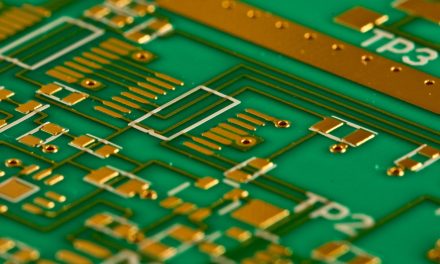Software and Hardware Innovations in 2019: Delivering Notable Improvements to the Provider-Patient Experience

First published on Celestica’s blog
Change is coming at the healthcare industry fast. Healthcare organizations are part of what we call the global Acceleration Economy, characterized by the rapid development of emerging technologies designed to meet customers’ higher-than-ever expectations for quality and fast delivery, and healthcare providers’ demands for flexible solutions that place more real-time patient data at their fingertips. These expectations put the onus on manufacturers to ensure their products eliminate the rigidity that has long been synonymous with the provider-patient experience. It requires making software easier for non-technical or medical end-users, and designing hardware that is more flexible to use. Manufacturers and technology providers are hard at work addressing these requirements and showcasing their progress at different moments in time throughout the year, including last month’s HIMSS19 Global Conference & Exhibition in Orlando, Florida.
We’re keeping a close eye on what’s happening in the industry and have identified three trends that will be front and center in 2019:
- Future proofing hardware for artificial intelligence acceleration. Miniaturizing hardware while expanding data capturing capabilities supported by the cloud to offer more informed provider/patient decision-making is growing in importance. These actions are putting manufacturers and technology providers on an accelerated path to take advantage of artificial intelligence. Ultrasound and bioengineering firm EchoNous is creating smaller, more flexible ultrasound devices with easier data transfer capabilities. Their product execution is indicative of an artificial intelligence (AI) and machine learning (ML) integration strategy that will remove non-value add activities from medical providers’ plates. Numerous companies like EchoNous are following the hardware trend that is clearly swinging towards incorporating as much automated functionality as possible. In most cases this means using AI or ML to automate manual steps or to do the ‘first steps’ as part of a process. This lowers costs because expert time (i.e., expensive time) can be focused on the most value add activities. Hardware companies must future-proof their designs to allow for the incorporation of automation and AI/ML technology as the industry will soon demand that as table stakes.
- Advancements in data interoperability facilitate faster delivery. The barriers to sharing data between technology providers, medical professionals and consumers are starting to come down thanks to accelerated efforts to integrate more application programming interfaces (APIs) between major technology companies. Healthcare analytics and software firm Change Healthcare recently announced a free data interoperability service through Amazon Web Services for document retrieval, identity management and record locators enabling easier, yet secure medical information access from electronic health records. In addition, on-demand ambulance service provider Ambulnz and Uber Health announced they are integrating their APIs to allow a medical professional to easily request with one simple click an Uber ride for a patient on any device that has the Ambulnz app.
- The consumerization of healthcare technology blurs the line between the personal mobile device and connected medical device. Smartphones and connected devices offer flexible form factors that provide infinite opportunities for software innovations, digital solutions and solution implementation from multiple providers to manage numerous aspects of the healthcare experience. Companies like Samsung are enabling mobile devices to be configured to serve as a consumer’s primary care management platform supported by apps from partners like personalized health analytics firm physIQ. In other cases, the medical device is literally a part of the consumer. Digital health firm Proteus and its ‘Proteus Discover’ solution is comprised of a manufactured pill with ingestible sensors, wearable patch and smartphone app. The solution unlocks new opportunities to monitor medication-taking patterns and measure treatment effectiveness.
For the technology providers and manufacturers bringing these innovations to bear, applying a holistic approach to the lifecycle of a piece of hardware or software has never been more critical to success. They need to ask themselves important questions: How can we design and deliver solutions that meet stringent regulatory requirements at the right cost and reliability? Is our supply chain ready to keep up with and satisfy customer demands as the product gains market traction? In healthcare, issues like quality control and supply chain problems are not just potential business disruptions – they can directly impact patient health. What solutions do we need to accelerate the pace of innovation and avoid extended gaps in delivering a seamless experience to the healthcare provider or patient?
Applying a holistic approach requires partners that deliver value at all stages of the product lifecycle. At Celestica, we understand the critical role our customers play in the health of patients. And our customers recognize the importance of leveraging technology to improve patient care and save lives.
Change is coming at the healthcare industry fast. Do you have strong partners in place to navigate that change and take your innovation to the next level? Learn more about Celestica’s capabilities and how we are enabling healthcare technology solutions for the future.













